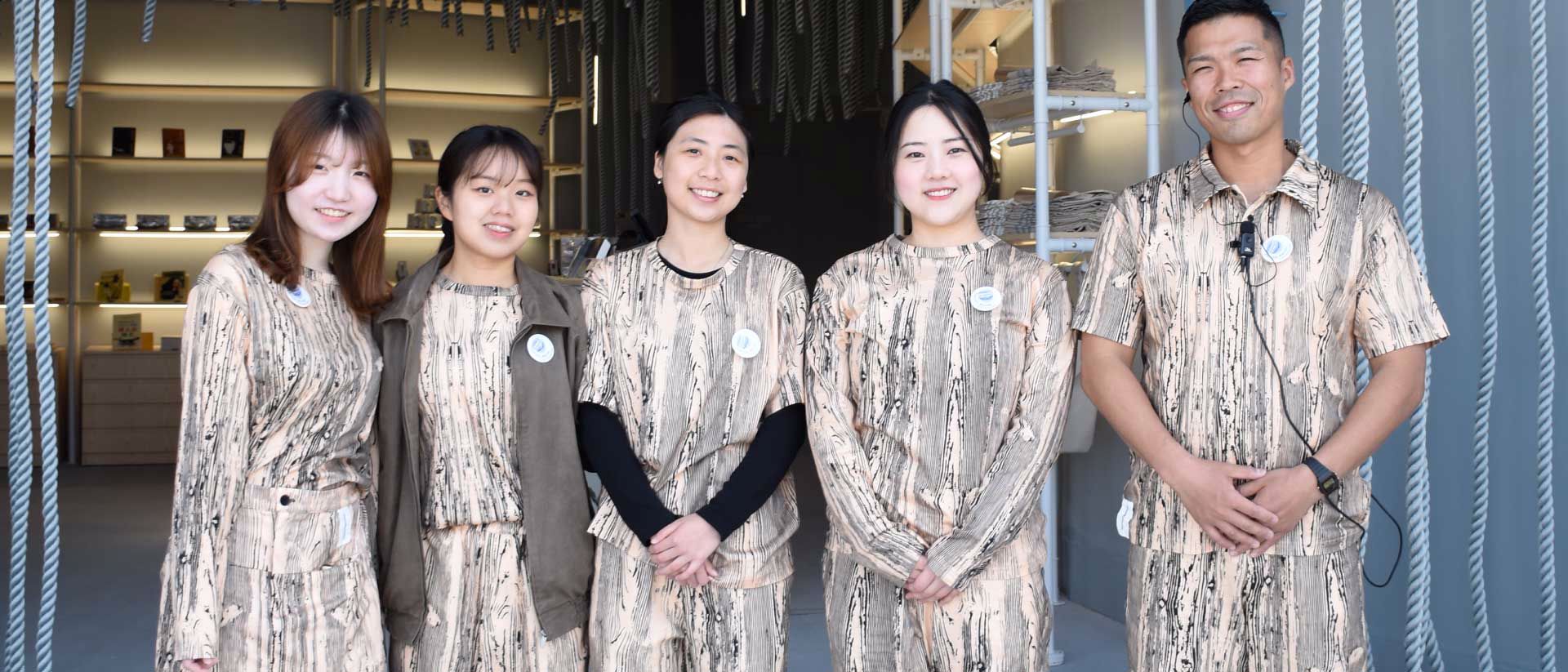Filipe Augusto and Miguel Flor designed the uniforms for the Portugal Pavilion team at Expo 2025 Osaka from ModaPortugal. They were mainly inspired by the Japanese cryptomeria (Cryptomeria japonica). This emblematic Japanese tree is also an essential element of the Azores landscape, where it was introduced in the 19th century and became the main forest species of the archipelago.
Cryptomeria is valued both for its aesthetics and its natural properties. Its wood, which ranges in colour from pink to reddish-brown, is light and resistant to moisture and degradation. It is used in construction, furniture, musical instrument manufacturing, and even surfboards. It is often planted near Shinto temples and shrines in Japan, reinforcing its connection to tradition and cultural heritage.
Relations between Portugal and Japan date back to 1543 when Portuguese navigators arrived in the Japanese archipelago. Since then, significant cultural and commercial exchanges have been visible in the language, gastronomy, and other products. Cryptomeria is one such link: a national tree in Japan and an essential resource in the Azores, it represents a dialogue between tradition and innovation. These two qualities also characterise the uniforms of the Portuguese Pavilion.
Cryptomeria is valued both for its aesthetics and its natural properties. Its wood, which ranges in colour from pink to reddish-brown, is light and resistant to moisture and degradation. It is used in construction, furniture, musical instrument manufacturing, and even surfboards. It is often planted near Shinto temples and shrines in Japan, reinforcing its connection to tradition and cultural heritage.
Relations between Portugal and Japan date back to 1543 when Portuguese navigators arrived in the Japanese archipelago. Since then, significant cultural and commercial exchanges have been visible in the language, gastronomy, and other products. Cryptomeria is one such link: a national tree in Japan and an essential resource in the Azores, it represents a dialogue between tradition and innovation. These two qualities also characterise the uniforms of the Portuguese Pavilion.

The uniforms were designed to reflect a timeless and sustainable design, combining traditional craftsmanship and technological techniques with eco-friendly materials, natural dyes and prints inspired by cryptomeria. The reference to wood appears in the colour blocks and graphic patterns, evoking both its natural state and the application of the Japanese technique of yakisugi – a traditional process of charring wood to make it more resistant to fire, insects and fungi.
In addition to the visual impact, the colour differentiation will also make it possible to identify the various teams working at the Pavilion: management, logistics, visitor assistance, maintenance, cleaning and F&B.
With this approach, the uniforms of the Portugal Pavilion at Expo 2025 Osaka reflect the historical and cultural connection between Portugal and Japan and a commitment to sustainable innovation.
In addition to the visual impact, the colour differentiation will also make it possible to identify the various teams working at the Pavilion: management, logistics, visitor assistance, maintenance, cleaning and F&B.
With this approach, the uniforms of the Portugal Pavilion at Expo 2025 Osaka reflect the historical and cultural connection between Portugal and Japan and a commitment to sustainable innovation.




